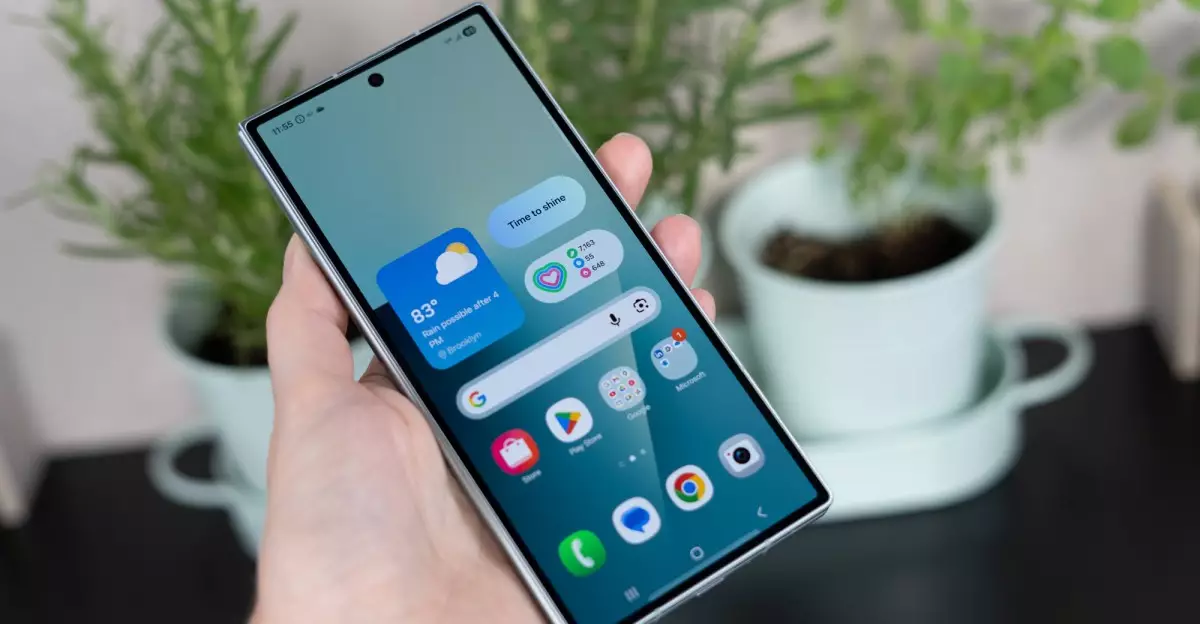The Samsung Galaxy Z Fold 7 represents a significant leap in the evolution of foldable smartphones—an innovation that pushes the boundaries of what a mobile device can be. While many might dismiss foldables as mere gimmicks or luxury gadgets, the Z Fold 7 challenges that perception with its remarkably thin design and expanded display real estate. At just 8.9 millimeters when folded, it feels more like a sleek, next-generation pocket assistant than a bulky, cumbersome device. The move from a 6.3-inch to a 6.5-inch outer screen exemplifies Samsung’s commitment to making foldables more practical and closer to the familiar form factor of traditional phones, albeit with foldable versatility.
Despite some critics pointing out that the Z Fold 7 does not drastically outperform its predecessor in raw specs, its value lies in refinement. It’s a testament to Samsung’s dedication to perfecting the foldable form factor, blending technological sophistication with everyday usability. The promise of having a pocket-sized, powerful device that transforms into a tablet shouldn’t be underestimated; it’s a portable powerhouse that can elevate productivity, entertainment, and multitasking—an essential tool in a digitally driven world.
The Price Tag and the Preorder Dilemma
Let’s confront the reality: the Z Fold 7 is expensive. With a staggering starting price of $1,999, it signals that Samsung is still targeting a niche market of early adopters and tech enthusiasts willing to invest in the future of mobile innovation. This price might seem prohibitive to many, especially considering other flagship phones cost significantly less. However, the true value is in the accessories, trade-ins, and promotional incentives that can soften the financial blow—if you’re savvy enough to seize them.
Preorders are crucial here, not just for securing the device but for unlocking a host of perks. Samsung’s exclusive offers—notably a $50 credit toward accessories, which can be spent on earbuds, cases, or smartwatches like the Galaxy Watch 8—offer tangible benefits. For those who skip the trade-in, Samsung sweetens the deal with an additional $300 credit, making the outlay slightly more palatable, provided you make the purchase during the preorder window. The catch, however, is that these incentives are time-limited, expiring just at the moment the phone launches.
This creates a sense of urgency that might be frustrating—missing out on perks simply because of timing. It raises an essential question about the true cost of ownership: does the price reflect the device’s cutting-edge features and design, or is it merely a reflection of marketing’s push toward premium pricing? From my perspective, Samsung’s approach emphasizes that this isn’t an everyday buy—it’s a statement piece, a device that defines innovation in the smartphone landscape.
Maximizing Trade-In and Carrier Promotions
One of the most compelling reasons to pre-order now is the generous trade-in offers, which can slash the price tag dramatically. Samsung’s trade-in program allows up to a $1,000 credit for last-gen models like the Galaxy Z Fold 6 or Galaxy S25 Ultra, effectively reducing the total cost to around $999—an incredible deal considering the retail price. The instant credit even applies when activating through Samsung’s website, granting a seamless transition from outdated phones to a cutting-edge device.
Carriers, however, are offering even more substantial incentives—up to $1,100 in monthly credits over three years, depending on the provider and plan. Verizon, AT&T, and T-Mobile are competing fiercely, but with varying conditions. For example, AT&T’s installment plan requires a postpaid unlimited plan, and the phone must be traded in. Verizon’s “any condition” trade-in policy seems flexible, yet specifics are vague, and eligibility might be nuanced. T-Mobile’s no-trade-in offer is appealing but only available with auto-pay and a higher-tier plan.
But these carrier offers aren’t without potential pitfalls. The long-term credit installments mean you’re financially committed to that carrier plan, and the trade-in process doesn’t necessarily translate into instant savings—as many of those credits are spread over months. It’s a strategic game: if you’re already with one of these providers or intend to stay, the trade-in deals could total thousands of dollars off. If not, Samsung’s direct trade-in program remains attractive because of its simplicity and immediate discounts.
The Real Value of Buying Strategy
Choosing where and how to purchase the Z Fold 7 boils down to a careful calculation. Right now, some retailers like Best Buy, Amazon, and Samsung itself offer a $300 gift card or no-charge on the 512GB version, but these deals are fleeting. The $1,899.99 offer from Best Buy on the 512GB variant, payable over 36 months, can make the hefty price more manageable—yet requires upfront planning and financing considerations.
It’s clear that Samsung’s strategy encourages consumers to think beyond the device itself. Accessories, extended warranties, and premium plans are an integral part of the overall ownership experience. The question then isn’t just about buying the device, but about integrating it into your lifestyle at the right time and price point. For early adopters ready to embrace foldables, now is the moment—yet it’s crucial to leverage every trade-in, promotional, and bundle opportunity to make a flagship device worth the premium investment.
Despite the rising costs, the Galaxy Z Fold 7 embodies the future of mobile technology. It’s a bold statement that foldables are here to stay and will soon become a staple, not a luxury. If you’re willing to navigate the complex landscape of carrier deals and preorder incentives, you can turn what seems like a hefty price into an affordable, transformative piece of tech.


Leave a Reply